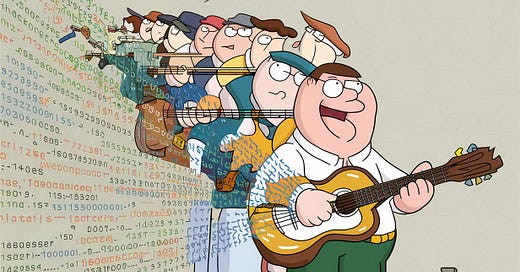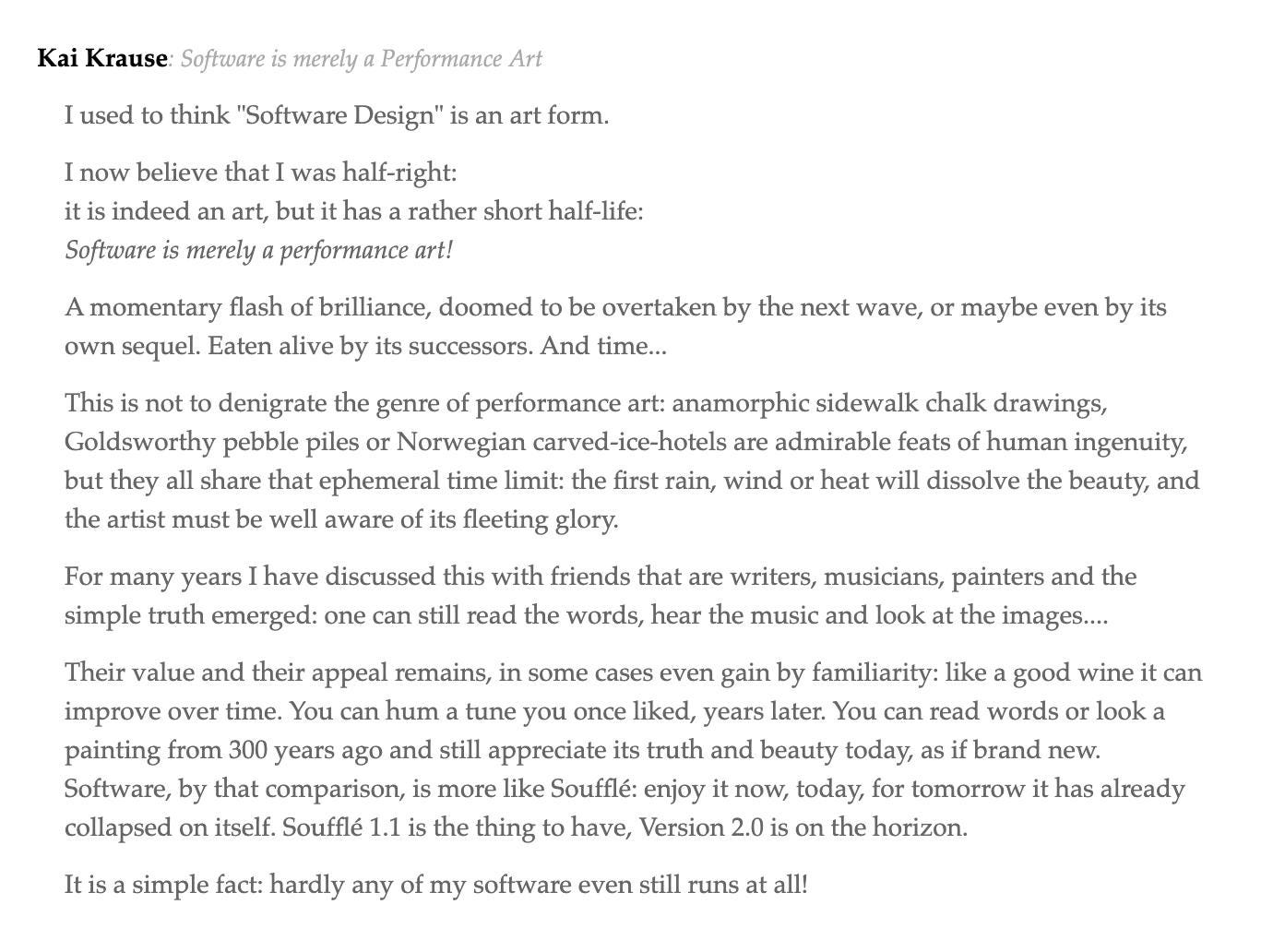Today’s doom-scrolling the depths of Reddit gave me this gem of a piece from 2008. Kai’s take very aptly offers a thesis for the argument “Designers are not artists” and underscores the transient nature of coded solutions.
Kai Krause for What have you changed your mind about in 2008
I’ve always been fascinated by the idea that semantics, mathematics, logic, and hardware compute together hold the potential to change the course of humanity. In my limited understanding of coding paired with arbitrary chunks of information I consume on social media; I have come to a conclusion that nothing is beyond limits for a software if the hardware to power it exists in a scalable form.
In terms of overall computing power, even an entry-level iPhone from the last few years would likely outperform the CDC 6600, the first-ever supercomputer made by humans in the 1960s, by a substantial margin. The technological advancements in processors, memory, and miniaturization have been truly remarkable, allowing modern smartphones to surpass the capabilities of early supercomputers while fitting in the palm of your hand.
Looking at this trope and understanding that “genAI” is out of the bottle, it makes me wonder about the next thing to be commoditized. Foundational HTML/CSS are just a prompt away, so is a huge chunk of UI- thanks to galileo.ai and Cognition AI’s Devin assistant. We’re moving through a systemic shift in the meaning of indispensable skills. From a philosophical and commercial standpoint, what value must an average human bring to the table?
Prompt: A creative and humorous illustration of a musician using his instrument to write code. The instrument is a guitar-like object that emits lines of code, which flow out in a digital rain-like stream. Behind the musician, a series of previous instances are visible, each playing a different instrument. Each iteration fades out, with the final one completely faded and the first one clear and in the best form, generating code. The overall aesthetic resembles the animations from Family Guy, with a touch of digital art.
Wearing the lens of a product designer, my bet is that we’re moving further towards reimagining ourselves as directors and curators. The production gruntwork will be automated, but it’d still need a human to point and paint a story. A very good corollary is “Everybody can learn how to edit a video but not everybody knows how to edit a video”. Christopher Nolan most definitely does not know what are the new plugins, updates, and shortcuts for the editing software used to refine his movie but he damn well knows how to assemble one in a way that lands him an Oscar. So my PSA to every product designer reading this article would be, “You really don’t need to be a Figma expert, but you damn well need to be a good performance artist- curating influential experiences independent from the medium manifests in”






